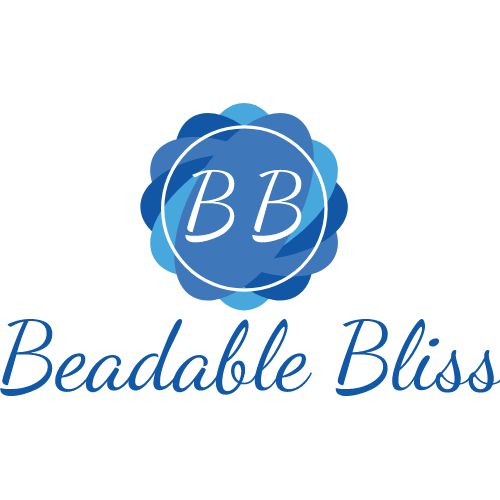Summary:
In our blog post, we'll cover the origins and composition of Heishi beads, their versatility, and their use in jewelry making. We'll also explore their spiritual significance and provide tips on getting started with Heishi clay beads. I recently made a beautiful bracelet using Heishi clay beads and loved the experience. With their small size and colorful designs, Heishi beads are perfect for creating unique jewelry pieces. However, I did face a small challenge when trying to string the beads together - they're so small that they can be tricky to handle! But with a little patience and practice, I was able to create a stunning piece that I adore.
Introduction:
Heishi clay beads are small, flat, and colorful. They're fun to work with and great for making jewelry. You can make beautiful necklaces and bracelets with them. Heishi beads are special because they come from Native American traditions. Whether you're a beginner or an expert, heishi beads are a great way to express your creativity and connect with history.
The Origins and Composition of Heishi Beads
Heishi, pronounced "hee-she," is a Native American word meaning "shell bead" in the Kewa Pueblo language. Traditionally, heishi beads were made from shells, but today they can be crafted from various materials, including clay.
What are heishi clay beads made of?
As the name suggests, these modern interpretations are primarily composed of polymer clay or ceramic clay. The clay is carefully shaped into small, flat discs or tubes, then baked or fired to create durable beads. Some artisans may incorporate natural materials or pigments into the clay for added texture and color variations.
The Versatility of Heishi Clay Beads
What are heishi clay beads used for? These tiny treasures are incredibly versatile and can be incorporated into numerous jewelry and craft projects. Some popular uses include:
- Necklaces and chokers
- Bracelets and anklets
- Earrings
- Hair accessories
- Bag charms and keychains
- Home decor items
What are heishi clay beads good for?
Their small size and uniform shape make them ideal for creating intricate patterns and color combinations. They're also lightweight, making them comfortable for everyday wear in jewelry pieces.
Heishi Clay Beads in Jewelry Making
What are heishi clay beads for bracelets? Heishi clay beads are a popular choice for bracelets due to their ability to create a smooth, consistent surface when strung together. They can be used to create various designs, such as:
- Stackable bracelets
- Wrap bracelets
- Stretch bracelets
- Beaded watch bands
- Friendship bracelets
I personally love working with heishi beads, as they provide endless creative possibilities. When I made my own heishi bead bracelet, I was impressed by how comfortable and sleek it looked on my wrist. The flat shape of the beads allows them to lay flat against the skin, creating a stylish and layered look.
I selected colorful flat-shaped Heishi Clay Beads to create my Heishi Clay Beads bracelet. To enhance the look of my bracelet, I used more Heishi beads, but you can use fewer if you prefer. Additionally, to give your bracelet a new look, you can incorporate silicone focal beads or fancy beads, which are available in high quality and at affordable prices on beadablebliss.com
The Spiritual Significance of Heishi Beads
Heishi beads Spiritual meaning: While clay heishi beads are a modern interpretation, traditional heishi beads hold deep spiritual significance in Native American cultures. They are often associated with:
- Protection from negative energies
- Connection to nature and the earth
- Spiritual growth and awareness
- Balance and harmony
Some people believe that wearing heishi beads can help align chakras and promote overall well-being. While clay heishi beads may not carry the same traditional significance, many crafters and jewelry enthusiasts appreciate the connection to this rich cultural heritage.
Getting Started with Heishi Clay Beads
If you're interested in working with heishi clay beads, consider purchasing a Heishi beads kit. These kits typically include:
- An assortment of heishi clay beads in various colors
- Stringing materials (elastic cord or beading wire)
- Clasps and other findings
- Instructions for basic projects
A kit is an excellent way to experiment with different designs and color combinations before investing in larger quantities of beads.
Understanding Heishi Bead Materials
What are Heishi beads made of? While we've focused on clay heishi beads in this post, it's worth noting that these versatile beads can be crafted from various materials, including:
- Shell (traditional)
- Stone (such as turquoise or coral)
- Wood
- Glass
- Metal
- Polymer or ceramic clay
Each material offers its own unique properties and aesthetic, allowing crafters to choose the perfect heishi beads for their projects.
Caring for Your Heishi Clay Bead Creations
To ensure the longevity of your heishi clay bead jewelry and crafts, keep these care tips in mind:
- Store pieces separately to prevent scratching
- Clean gently with a soft, dry cloth
- Restring bracelets periodically to maintain elasticity
Heishi Clay Beads offer a modern twist on a traditional art form. Their versatility, affordability, and aesthetic appeal make them a favorite among jewelry makers and craft enthusiasts. Whether you're creating a simple bracelet or an intricate necklace, heishi clay beads provide endless possibilities for creative expression.
FAQs About Heishi Clay Beads
(1) What makes Heishi beads unique?
Their flat shape, vibrant colors, and versatility in creating jewelry.
(2) What are Heishi beads made of?
Traditionally shells; modern ones are made from clay, glass, or metal.
(3) How are Heishi beads used?
To make bracelets, necklaces, earrings, and other craft items.
(4) Do Heishi beads have spiritual meaning?
Yes, traditional beads symbolize protection and balance.
(5) Where can I buy Heishi beads?
Visit beadablebliss.com for a wide variety of Heishi and silicone beads.



